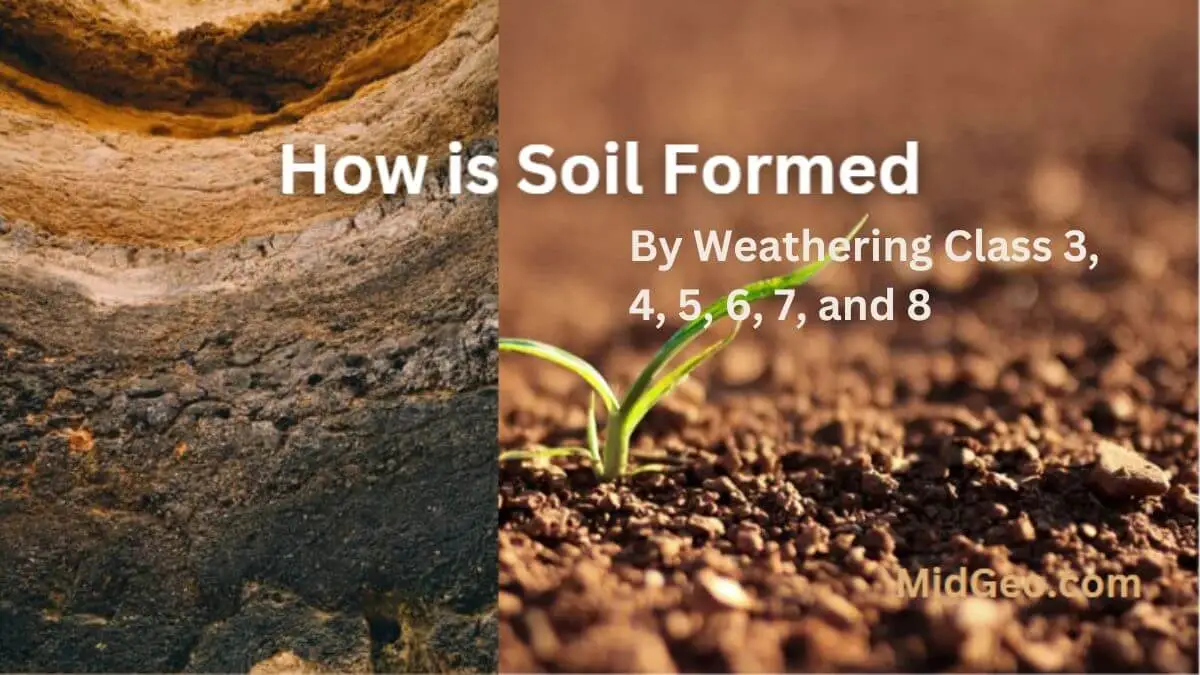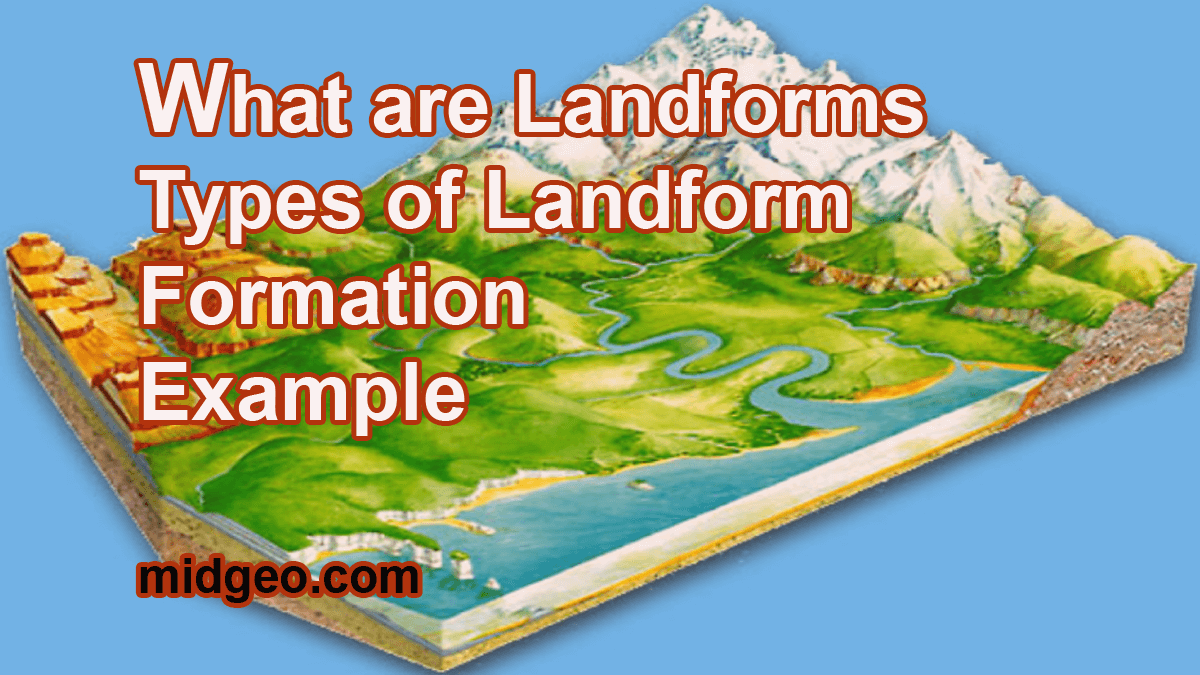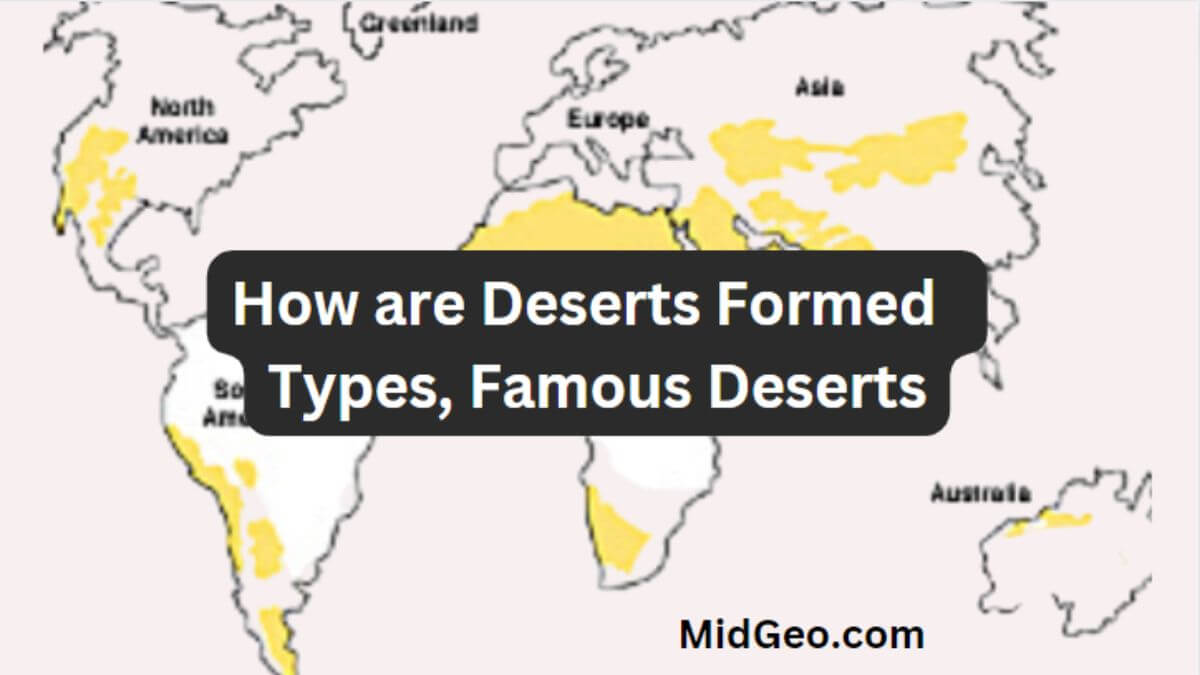
Volcanoes are some of the most mesmerizing and awe-inspiring natural phenomena on Earth. These majestic mountains can be found all over the world and have been known to cause massive destruction and devastation when they erupt.
But did you know that not all volcanoes are the same? In fact, there are different types of volcanoes, each with their own unique characteristics and eruption styles.
In this article, we will explore the question “How many types of volcanoes are there?” and delve into the fascinating world of volcanoes.
Read Also :
- Formation of Volcanoes Step by Step and Volcano Examples
- What are Volcanoes: Definition, Geography, Facts
Types of Volcanoes
- Shield Volcanoes:
Shield volcanoes are named for their broad, gently sloping profile, which resembles a warrior’s shield lying on the ground. They are formed by the eruption of fluid lava flows that are less explosive than those of other types of volcanoes. Hawaii’s Mauna Loa is an excellent example of a shield volcano.
- Stratovolcanoes:
Stratovolcanoes, also known as composite volcanoes, are the most common type of volcano. They are characterized by a steep profile and explosive eruptions that result from the buildup of pressure in the magma chamber. Mount St. Helens in Washington State is a well-known stratovolcano.
- Cinder Cones:
Cinder cones, also called scoria cones, are the simplest type of volcano. They are formed from explosive eruptions of tephra (volcanic fragments) that accumulate around the vent. They are typically smaller and shorter-lived than other types of volcanoes.
- Lava Domes:
Lava domes are formed when highly viscous lava piles up around the vent, forming a dome-shaped mountain. These volcanoes are characterized by slow, viscous eruptions that can last for years or even decades. Mount St. Helens has a lava dome that has been growing since its last eruption in 2008.
- Supervolcanoes:
Supervolcanoes are rare but extremely powerful types of volcanoes that can cause catastrophic damage to the surrounding area. They are characterized by a large, collapsed caldera (crater) that is formed by the eruption of enormous volumes of magma. The Yellowstone Caldera in Wyoming is an example of a supervolcano.
How Many Types of Volcanoes are There?

There are several types of volcanoes, but the main types are generally considered to be shield volcanoes, stratovolcanoes, cinder cone volcanoes, and lava dome volcanoes.
Volcanoes are natural vents that release molten rock, ash, and gases from the Earth’s crust. There are several types of volcanoes, each with unique characteristics and eruption styles. Here are the answers to some common questions about the types of volcanoes:
What are the 6 Major Types of Volcano?
There are several types of volcanoes, but the six main types are:
- Shield volcanoes,
- Stratovolcanoes,
- Cinder cone volcanoes,
- Lava dome volcanoes,
- Fissure volcanoes, and
- Submarine volcanoes.
Fissure volcanoes are long cracks in the Earth’s crust that release lava, and submarine volcanoes are located on the ocean floor.
What are the 4 Forms of Volcanoes?
The four main types of volcanoes are:
- Shield volcanoes: Shield volcanoes have broad, gently sloping sides and are formed by lava flows.
- Stratovolcanoes (also called composite volcanoes): Stratovolcanoes are tall and steep with alternating layers of lava and ash.
- Cinder cone volcanoes: Cinder cone volcanoes are small and cone-shaped, formed from explosive eruptions of ash and rock fragments.
- Lava dome volcanoes: Lava dome volcanoes are formed by viscous lava that piles up in a dome shape over the vent.
What are the 3 major types of volcanoes?
There are three general types of volcanoes based on their shape and eruption style:
- Shield volcanoes
- Cinder cone volcanoes
- Stratovolcanoes
3 Types of Volcanoes Active, Dormant, Extinct:
Volcanoes can be classified as active, dormant, or extinct based on their recent activity.
- An active volcano is one that is currently erupting or has erupted recently.
- A dormant volcano is one that has not erupted in a long time but is still considered capable of erupting in the future.
- An extinct volcano is one that is unlikely to erupt again.
- What is a Beach? How Are Beaches Formed?
- List of Landforms A to Z on Earth
- Which Land Feature Supports the Theory of Continental Drift?
- How are Sedimentary Rocks Formed: Understanding the Formation Process
- Why is a Delta Often Used as an Agricultural Area?
Types of Volcanoes for Kids:
When teaching kids about volcanoes, it can be helpful to simplify the types of volcanoes into three categories: shield volcanoes, cinder cone volcanoes, and stratovolcanoes.
- Shield volcanoes – These are the largest volcanoes and have gentle slopes. They are formed from basaltic lava that flows easily and spreads over a large area. Hawaii’s volcanoes are shield volcanoes.
- Cinder cone volcanoes – These are small, steep-sided volcanoes that are formed from explosive eruptions of volcanic ash and rock fragments. They often have a bowl-shaped crater at the top.
- Composite or stratovolcanoes – These are tall, cone-shaped volcanoes that are formed from alternating layers of lava and ash. They often have a crater at the summit and can be very explosive.
Types of Volcanic Eruptions:
- Explosive eruptions – These occur when pressure builds up inside the volcano and is released in a violent explosion. These eruptions can be very destructive and can produce ash, rock fragments, and lava flows.
- Effusive eruptions – These occur when magma flows easily out of the volcano and forms lava flows. These eruptions are usually not very explosive.
- Phreatic eruptions – These occur when magma comes into contact with water and creates a steam explosion. These eruptions can be very dangerous because they can produce ash, rock fragments, and hot mudflows.
Types of Volcanoes According to Activity:
Volcanoes can also be classified by their activity level, which includes active, dormant, and extinct. Active volcanoes are currently erupting or have erupted recently, dormant volcanoes are not currently erupting but could erupt in the future, and extinct volcanoes are
Active Volcano:
An active volcano is a volcano that has erupted in the past 10,000 years and is expected to erupt again in the future. There are over 500 active volcanoes in the world, and they can be found along tectonic plate boundaries and hotspots.
Active volcanoes can be monitored for signs of eruption, such as earthquakes and gas emissions. When an active volcano is showing signs of eruption, it can be very dangerous for nearby communities, and evacuation plans must be put in place.
However, active volcanoes also provide many benefits to the environment, such as creating new land, fertile soil, and geothermal energy.
Overall, understanding the different types of volcanoes can help us better predict their behavior and potential hazards. By studying the shape, eruption style, and activity level of volcanoes, scientists can provide important information for disaster planning and mitigation.
FAQs:
Q.1: How many types of volcanoes are there?
A. There are five main types of volcanoes: shield volcanoes, stratovolcanoes, cinder cones, lava domes, and supervolcanoes.
Q.2: What type of volcano is Krakatoa?
A. Krakatoa is a composite volcano, also known as a stratovolcano. Composite volcanoes are characterized by their steep sides and conical shape. They are formed by alternating eruptions of explosive pyroclastic materials, such as ash and tephra, and effusive lava flows.
Q.3: What type of volcano is Yellowstone?
A. Yellowstone is a supervolcano, which is a type of volcano that is capable of producing a massive eruption with an ejecta volume of more than 1,000 cubic kilometers. Supervolcanoes are rare but extremely powerful, and their eruptions can have catastrophic effects on the environment and human societies.
Q.4: What type of volcano is Mount Fuji?
A. Mount Fuji is a composite volcano, also known as a stratovolcano. It is the highest mountain in Japan and is considered one of the country’s three sacred mountains. The mountain has a symmetrical cone-shaped structure with steep sides, and it has been dormant since its last eruption in 1707.
Q.5: What type of volcano is Mauna Loa?
A. Mauna Loa is a shield volcano, which is a type of volcano with a broad, gently sloping shape that is formed by the accumulation of fluid lava flows. Shield volcanoes are usually characterized by their low viscosity lava and frequent but non-explosive eruptions. Mauna Loa is located in Hawaii and is one of the largest volcanoes on Earth.
Q.6: What type of volcano is Kilauea?
A. Kilauea is also a shield volcano, located on the Big Island of Hawaii. It is known for its frequent eruptions and fluid lava flows, which often produce spectacular lava fountains and create new land as they flow into the ocean. Kilauea has been erupting continuously since 1983, making it one of the most active volcanoes in the world.
Q.7: What type of volcano is Mount Saint Helens?
A. Mount Saint Helens is a composite volcano, located in the Cascade Range in Washington State, USA. It is known for its explosive eruption in 1980, which was one of the most destructive volcanic events in the history of the United States. The eruption caused the entire northern flank of the volcano to collapse, triggering a massive landslide and a lateral blast that devastated the surrounding area.
Q.8: How many volcanoes are there?
A. There are around 1,500 potentially active volcanoes on Earth, with about 50-70 volcanoes erupting each year. However, the actual number of active volcanoes varies depending on the definition used. Some sources consider only the volcanoes that have erupted in the past 10,000 years to be active, while others include those that have shown signs of volcanic activity in recent times.
- What is a Beach? How Are Beaches Formed?
- List of Landforms A to Z on Earth
- Which Land Feature Supports the Theory of Continental Drift?
- How are Sedimentary Rocks Formed: Understanding the Formation Process
- Why is a Delta Often Used as an Agricultural Area?
However, By understanding the different types of volcanoes, we can better appreciate their unique characteristics and the impact they can have on our planet. So, the next time you come across the question “How many types of volcanoes are there?” you’ll know the answer and be able to appreciate the fascinating world of volcanoes even more.





